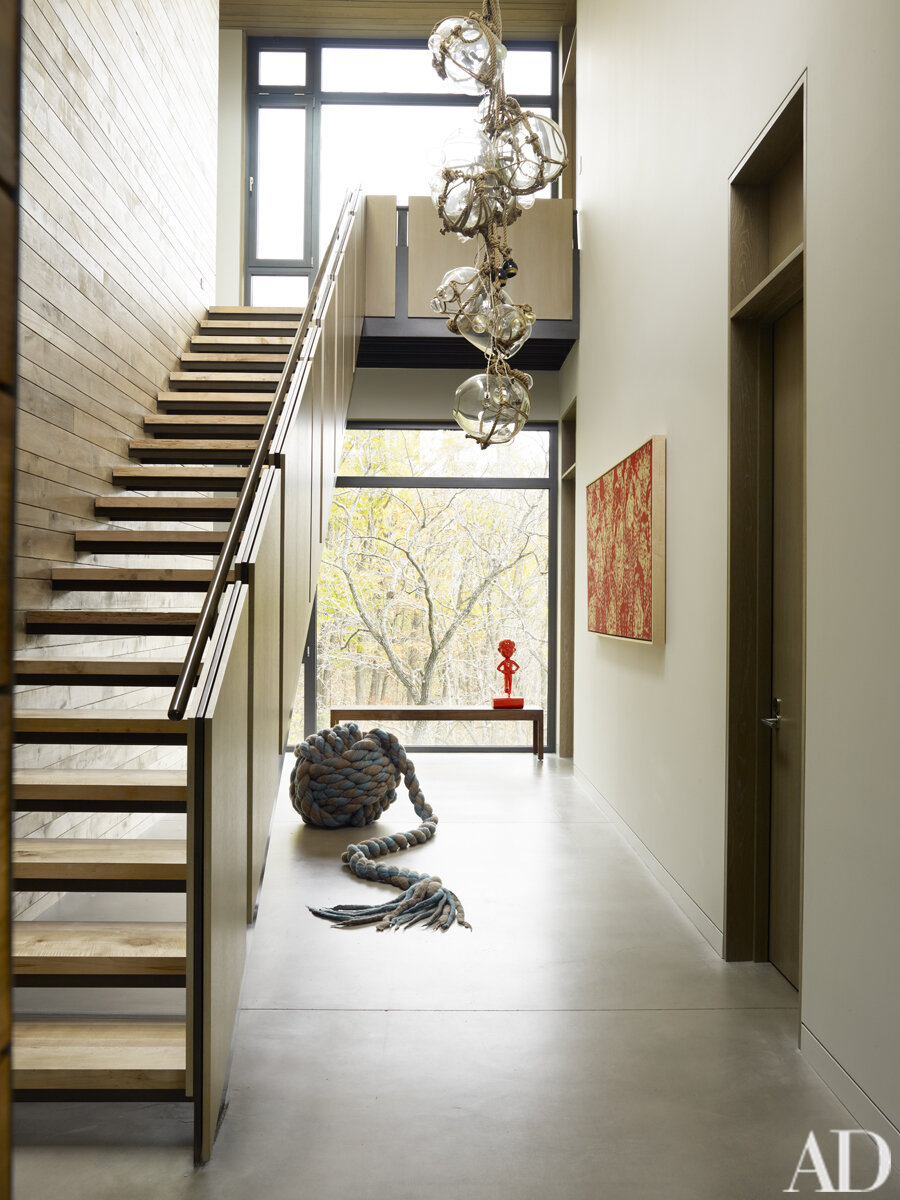Architectural Digest: River House
Written by Tim McKeough | Original Article
Image by William Waldron for Architectural Digest
With customization on the rise, AD explores the process at Roll & Hill
Big, beautiful rooms usually cry out for gorgeous light fixtures—and often, the best way to deliver is by customizing the fixture to the space. “We find ourselves, very often, in the position of taking something that’s already a special fixture and customizing it, in terms of dimensions, finish, or configuration,” says architect Poonam Khanna, founder of the New York firm the Unionworks. To do so, she sometimes turns to the Brooklyn-based lighting company Roll & Hill. “When they’re working on a custom iteration, they’re also providing design guidance,” she says. “It’s like having an extra designer in your back pocket.”
To detail how the customization process works, AD spoke with Roll & Hill founder Jason Miller. “We will customize anything in our current collection, which includes more than 30 product lines, so long as it’s feasible,” he says, noting that about 20 percent of the company’s business comes from such orders. The beginning of the process is collaborative. “Sometimes, designers will approach us and ask what we can do for a space,” says Miller. They might provide architectural plans of the space, some general guidelines for the shape and size of the fixture, or an idea of the feeling they want in the room. Other times, he notes, “they’ll provide a sketch for what they have in mind.”
Roll & Hill’s design team then creates a more technical drawing to get the ball rolling. “If we have a sketch, we’ll see if it’s feasible as drawn by the designer,” says Miller. “If not, we’ll produce a drawing that is as close to what they’re looking for as we can get.” Then, there’s typically a back-and-forth process of marking up and revising that drawing. “Sometimes, we nail it the first time and the designer is happy,” he says. “Other times, it can take weeks.”
Some requests are inherently easier to accommodate than others. With fixtures like Miller’s Modo chandelier “it scales up and down in size very easily,” he says. “The way it’s produced, we just need to make some tubes longer or shorter. But that’s not always the case.” For instance, one recent client wanted to give Miller’s cylindrical Endless fixture, which has a modular construction that seems ideal for customization, a new square profile. “It’s theoretically a small change, but we would have literally had to start from scratch,” he says. “It’s not usually scale that causes problems—it’s requests that require totally reengineering the product.”
There is also the question of design integrity. If revisions to a fixture seem like they are starting to stray too far from the product designer’s original intent, Roll & Hill will reach out to that designer for input, to ensure that everyone involved is pleased with the final outcome. The company offers the possibility of creating custom finishes as well, but always with an eye on quality. “In general, doing custom finishes on steel and brass is relatively easy, but aluminum is a little trickier,” says Miller. “We’re open to any custom finish, as long as we feel like we can do it successfully.”
When the interior designer and manufacturer are in agreement about the custom piece, the final drawing is provided to the interior designer for sign-off, along with the final price quote (Roll & Hill’s minimum for a custom fixture is $6,000). If a custom finish is involved, a sample may also be provided for sign-off. Then, Roll & Hill’s workshop kicks into gear to build it—a one-of-a-kind fixture you won’t see anywhere else.

